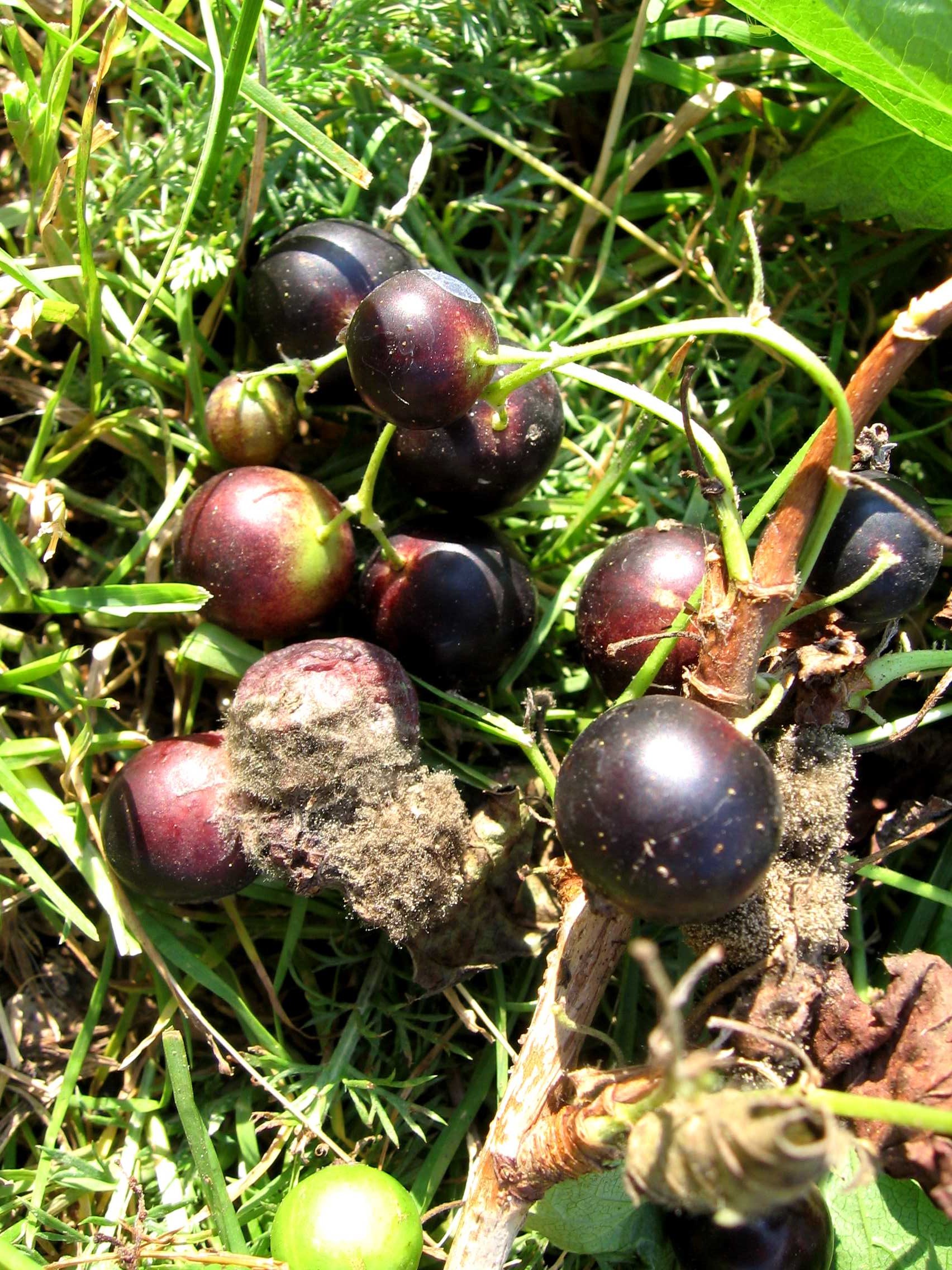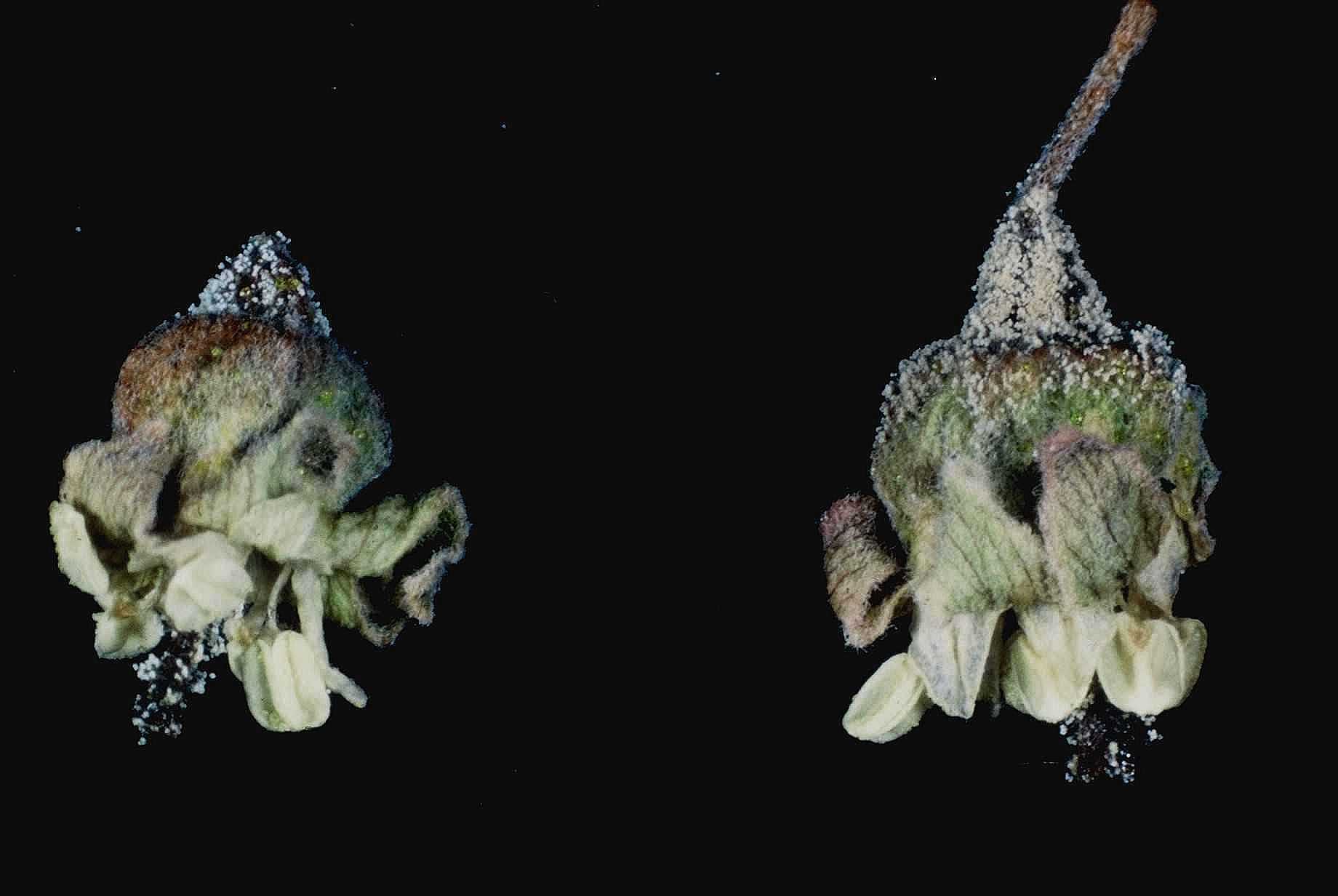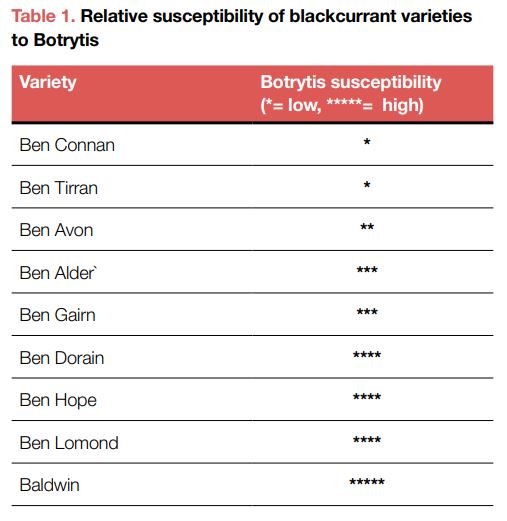Please click here to access the main AHDB website and other sectors.
- Home
- Knowledge library
- Botrytis in blackcurrant: varietal differences in susceptibility
Botrytis in blackcurrant: varietal differences in susceptibility
Find information on blackcurrant varietal susceptibility to botrytis
Return to the main page: Developing novel biocontrol methods for pests and disease in blackcurrant
What is botrytis?
Botrytis cinerea is the cause of grey mould in blackcurrants.
The fungus attacks shoots, flowers and berries, causing die-back and rotting of flowers and fruit as well as the associated condition, known as ‘run-off’, where developing currants become detached from the strig and drop to the soil below.
In moist conditions infected plant tissues, including fruit, become covered in a familiar mass of grey dusty spores (conidia). The open flower is the most susceptible stage for infection, especially in damaged or older flowers. Botrytis overwinters as mycelium or sclerotia (hard black resting bodies) mainly on dead shoots or on mummified berries left hanging on the bush or on the ground. In spring, the sclerotia germinate and produce a mass of conidia in humid conditions. These are spread by wind and rain to infect flowers. Pollinating insects can also spread spores from flower to flower. Germinating conidia give rise to new hyphae which colonise the developing fruit where the fungus may remain dormant until the flower or fruit aborts (run-off) or until the fruit begins to ripen when it results in rotting.
Open blackcurrant flowers are the most susceptible stage for Botrytis infection
Research at the James Hutton Institute has shown that ovaries in blackcurrant flowers produce increased levels of ethylene in response to Botrytis infection, which is associated with ‘run-off’. Blackcurrant genotypes vary in their ability to produce ethylene and in their sensitivity to it. Cultivars such as Baldwin, Ben Alder and Ben More are more sensitive to ethylene and hence ‘run-off’.
Ovaries in blackcurrant flowers produced increased levels of ethylene in response to Botrytis infection, which is associated with ‘run-off’

Botrytis sporulation on blackcurrant fruit
Blackcurrant varietal differences in susceptibility to botrytis
A study examined the relative susceptibility of a range of blackcurrant varieties to Botrytis.
15 blackcurrant varieties and numbered selections with differing genotypes were selected from the blackcurrant germplasm collection at the James Hutton Institute.
They were chosen to provide varying agronomic and fruit quality characteristics.
Initial laboratory assessments of field grown fruit from each selected genotype showed clear differences in the rate of Botrytis development, with full infection of surface-sterilised samples varying from six to 26 days.
Susceptibility
Investigations on different genotypes to identify any correlation between berry skin strength and botrytis infection were unsuccessful over several seasons, including both wet and dry years.
Similarly, differences in floral morphology in different genotypes, showed no correlation with Botrytis susceptibility.
The response of some of the selected genotypes to Botrytis infection was inconsistent between years, but some trends were evident.
For instance, Ben Klibreck showed significantly lower levels of botrytis than Ben Gairn in most years.
Table 1 lists the relative susceptibility of a range of blackcurrant varieties based on field experience and trends seen in the Defra Horticulture LINK project.
Useful links
AHDB funded research into blackcurrant botrytis control
Evaluation of fungicides for the control of Botrytis
Developing traps and thresholds for blackcurrant sawfly
Read the biocontrol in soft fruit guide
Download the bush fruit crop walkers' guide
Authors
These pages were originally authored by Michelle Fountain, Angela Berrie and Scott Raffle (NIAB) in 2015.




